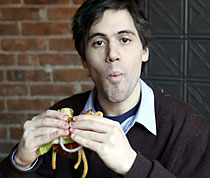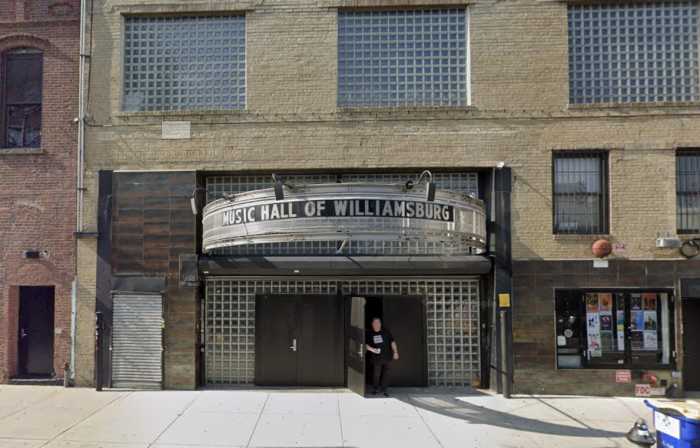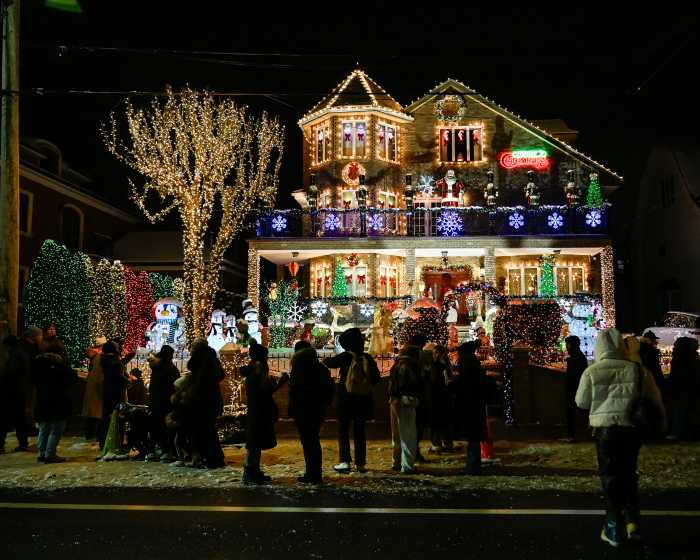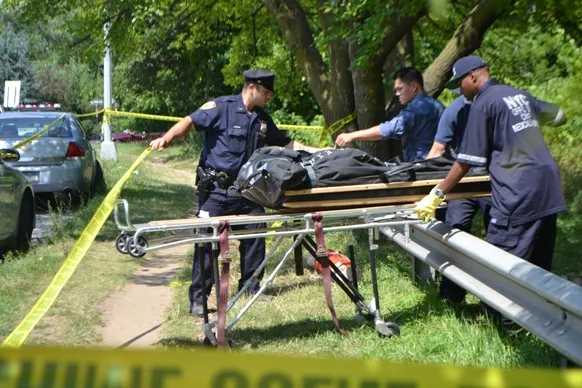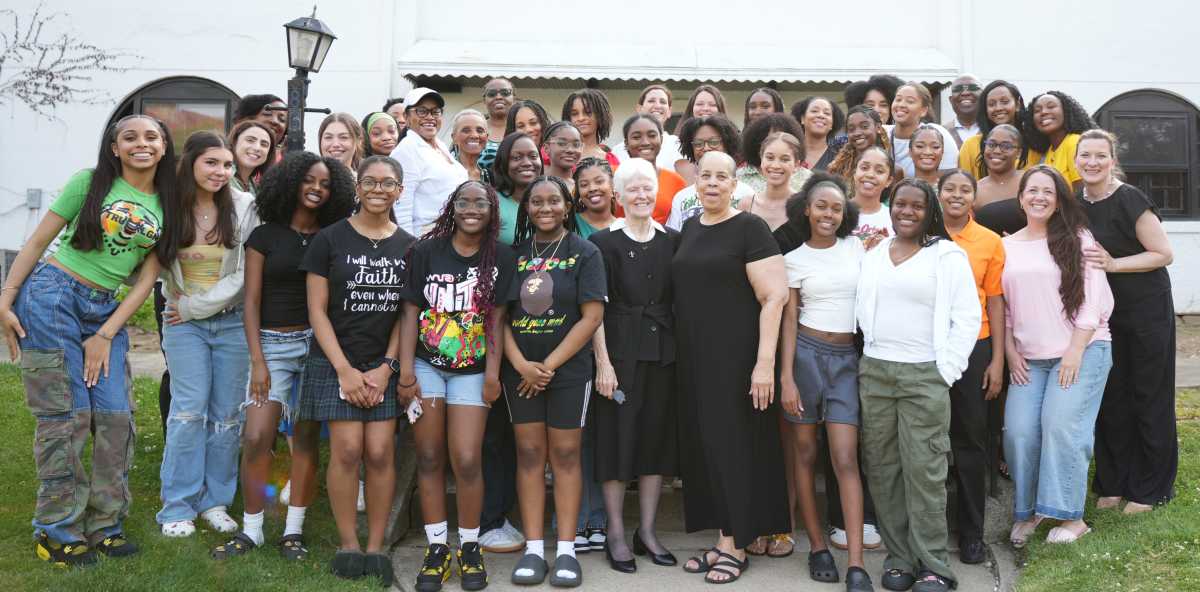Rather than being elated about his award-winning
movie, "Assisted Living," which opened at the Angelika
Film Center this week, Prospect Heights filmmaker Elliot Greenebaum
is exhausted.
In lieu of sleep, the 27-year-old Greenebaum had spent the previous
evening trying to get a damaged film reel replaced in time for
a press screening. And this was just the latest hiccup in the
5-year-long saga that has been the story of bringing his first
film to theaters.
"It’s not a labor of love anymore," Greenebaum dryly
told GO Brooklyn in an interview at his local burger joint, City
Lighting. "It’s duty to complete something. It’s a good
movie. I’ve been around it a long time, but other people haven’t
seen it – aside from film festivals, so it’s time for them to
see it."
Directed and written by Greenebaum, "Assisted Living"
concerns a young man, Todd, who doesn’t take his life or job
at an assisted living facility for the elderly too seriously.
In fact, Todd often takes breaks to self-medicate (with marijuana)
and makes the days go faster by coming in late, rolling around
in wheelchairs and making phony phone calls to the seniors impersonating
god.
"The main character is basically just me," said Greenebaum.
"It tracks [the character’s] transformation from childhood
to adulthood in the course of a day. He starts off the film trying
to remain distant from his world by turning it into a comic abstraction.
He plays games with people. He makes pictures in his head that
seem weird and interesting He plays games with the residents.
They’re not real people to him, just objects. He tries to have
as much fun as he can and serve himself well."
While his irreverent antics are humorous, Todd (played by Michael
Bonsignore) is clearly frittering away his youth while the patients
are marching toward death’s door. Despite the odds, Todd strikes
up a reluctant friendship with Mrs. Pearlman (Maggie Riley) who
is longing desperately for a change of scenery – at the very
least. She hopes her son will rescue her from the dull loneliness
of life in this relatively pleasant institution with its droning
TV sets and bingo games and lessons from a monkey handpuppet.
Although it has taken Greenebaum’s indie film a long time to
hit the big screen, it doesn’t mean that the folks who have seen
it didn’t appreciate it. "Assisted Living" won the
2003 Slamdance Film Festival’s Grand Jury Prize, as well as grand
jury prizes at that year’s GenArt Film Fest, Woodstock Film Fest
and Savannah Film Fest. And just because Greenebaum is bemoaning
his sleepless night and the weather ("Are you cold? I’m
cold."), it doesn’t mean he’s not pointing out the hilarious
badge he’s wearing with photos of his film’s two stars wearing
gigantic dark plastic sunglasses (post-mydriatic specs, for those
in-the-know).
"There was a hubbub about it at one point," Greenebaum
recalled about his rollercoaster ride as a first-time indie filmmaker.
"The distributor went bankrupt, and that’s why it didn’t
come out last year. So [2004] has had some drag-like characteristics
psychologically."
After describing his distributor’s financial problems as being
the "nadir" of his love affair with "Assisted
Living," he quickly explained that the experience was an
opportunity for him "to learn about distribution and to
try to take on the challenge of beating out pessimistic, manipulative,
dishonest big companies that trick people into going and seeing
their bad products."
Make no mistake that Greenebaum enjoys a challenge. He shot his
film under "excruciatingly bizarre conditions, sometimes
without a script" in five different nursing homes in Kentucky,
with most of the footage shot at the Masonic Homes of Kentucky
assisted living facility.
"I didn’t audition anyone. I was just recommended some actors
in Louisville. I would talk with them and then I would write
scenes that matched the way they talk and act, so it wasn’t hard,"
Greenebaum said with a chuckle.
In addition to the actors in key roles, he also filmed the actual
residents, who appear remarkably relaxed in the final product.
All of which begs the question, how much of the film is real
and how much is fiction?
"I did want to show how strange the real world is,"
said Greenebaum. "So whenever I use documentary material
it was always at the service of reawakening the viewer to the
kind of bizarre and bewildering reality of this world. If you
look at it carefully, things you take for granted are unfathomably
weird. The documentary material, I hope, has an effect of giving
a lot of traction to the fiction, giving it a lot of support."
And while the film takes pictures of "real" people
and "real" settings, Greenebaum takes pride in blurring
the boundaries between genres.
"It’s not shot documentary-style either; it just takes pictures
of things that are real," said Greenebaum. "But it
doesn’t do that with a shaky camera – or I don’t know what the
genre tropes are these days to make things look like a documentary.
The documentary material is done in a very stately way that co-mingles
with the fiction so that you can’t tell what’s real and what’s
not real when you watch the movie.
"My deep desire when I started this project was to not merely
mix documentary with fiction but to make nonsense out of the
distinction. Because film is this art form where you take pictures
of real things and then you put them together in a row. It’s
not like ’that shot’s real, and that shot’s fake.’ It’s not fictional
or documentary. It has to be in a context.
"If you film James Bond saying, ’I think that’s a handsome
fork,’ and then there’s a close up of a hand picking up the fork,
no one’s like, ’They did such a great job mixing documentary
and fiction in the new James Bond movie.’ And now this is suddenly
a fictional fork, a fake fork in a fake hand in a fictional context.
There are actual scenes [in ’Assisted Living’] which are part
of a fictional narrative but they don’t have any acting in it."
While Todd’s antics provide much of the comic relief of the story,
the director takes us with Todd into places where the viewer
must confront their own mortality and the grim aging process.
In one such scene, Todd goes to the infirmary where wailing patients
are suffering from dementia and other ills.
"Todd has to have an aversion to age," said Greenebaum,
"and the audience is so relieved because they have an aversion
to age. And then they get screwed because they have to go where
people are old and sick."
But Greenebaum says the film, stemmed less from an interest in
raising awareness about eldercare issues, than an interest in
telling a mother-son story.
"It’s about a mother who wants her son to rescue her and
about a janitor’s decision to be that son, or not. And that was
the story. Now what made me interested in mother-son issues?
I have a mom, and I’m her son," said Greenebaum, deliberately
ending further discussion with an intriguing Cheshire cat grin.
Greenebaum said his next film will be set in another atmospheric
location, but "It will be Terrence Malick-y, with a strong
script, but with less visceral impact. It will be more formal
and less experimental.
"My next film is going to be at a small airport like an
FBO – a fixed base operation There are stages that have a lot
of poetry for me. And nursing homes have poetry for me. And I
like airplanes for some reason and somehow you get in these sort
of math riddles with yourself trying to structure things so that
they’re poetic so the characters hit their marks and the emotional
choreography will be right and you come out with this sculpture
of some kind that hopefully feels like a thing. ’Assisted Living’
feels like a little sculpture, like a Joseph Cornell [shadow]
box."
The filmmaker has a rigorous strategy to get himself through
the opening week of "Assisted Living," which he hopes
will trigger a wider release across the country in the coming
weeks and months and hopefully signal an end to this roller coaster
ride.
Said Greenebaum, "I keep myself exhausted to keep away the
fears."
"Assisted Living" by Elliot
Greenebaum is now playing at the Angelika Film Center (18 West
Houston between Broadway and Mercer Street in Manhattan). Tickets
are $10.50, $7 (seniors 62 and older). For more information,
call (212) 995-2000 or visit the Web sites www.AngelikaFilmCenter.com
or www.assistedlivingthemovie.com.


